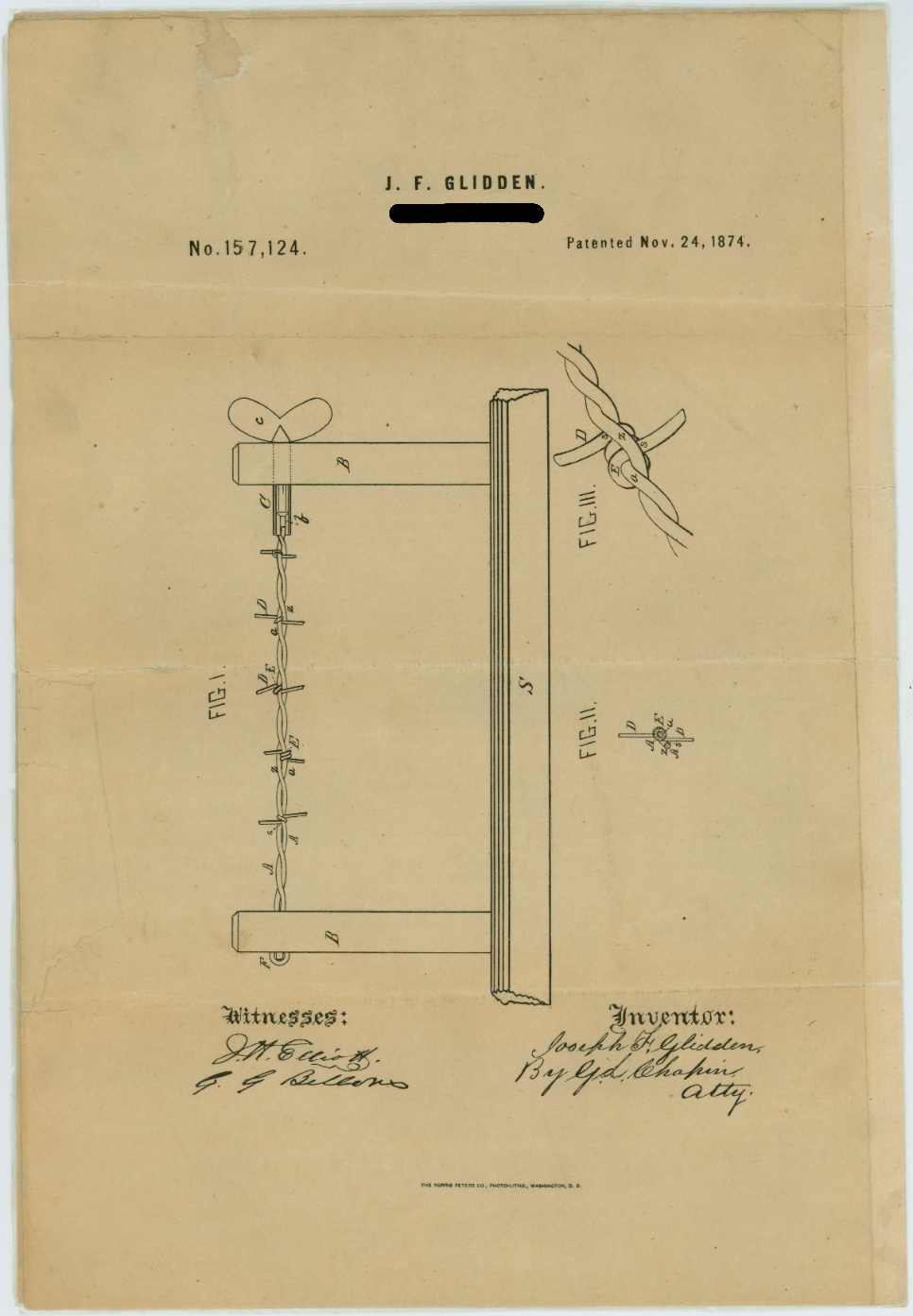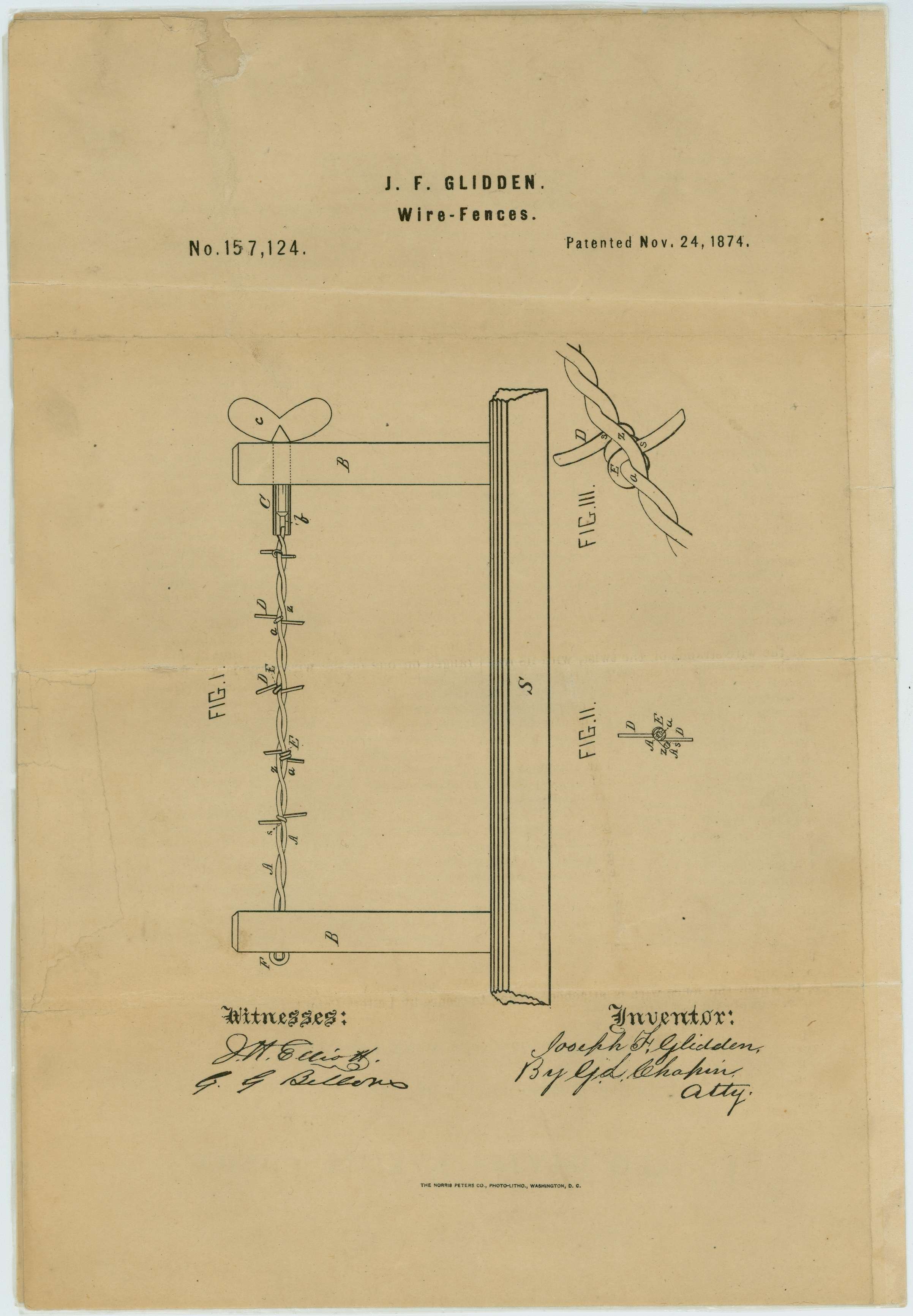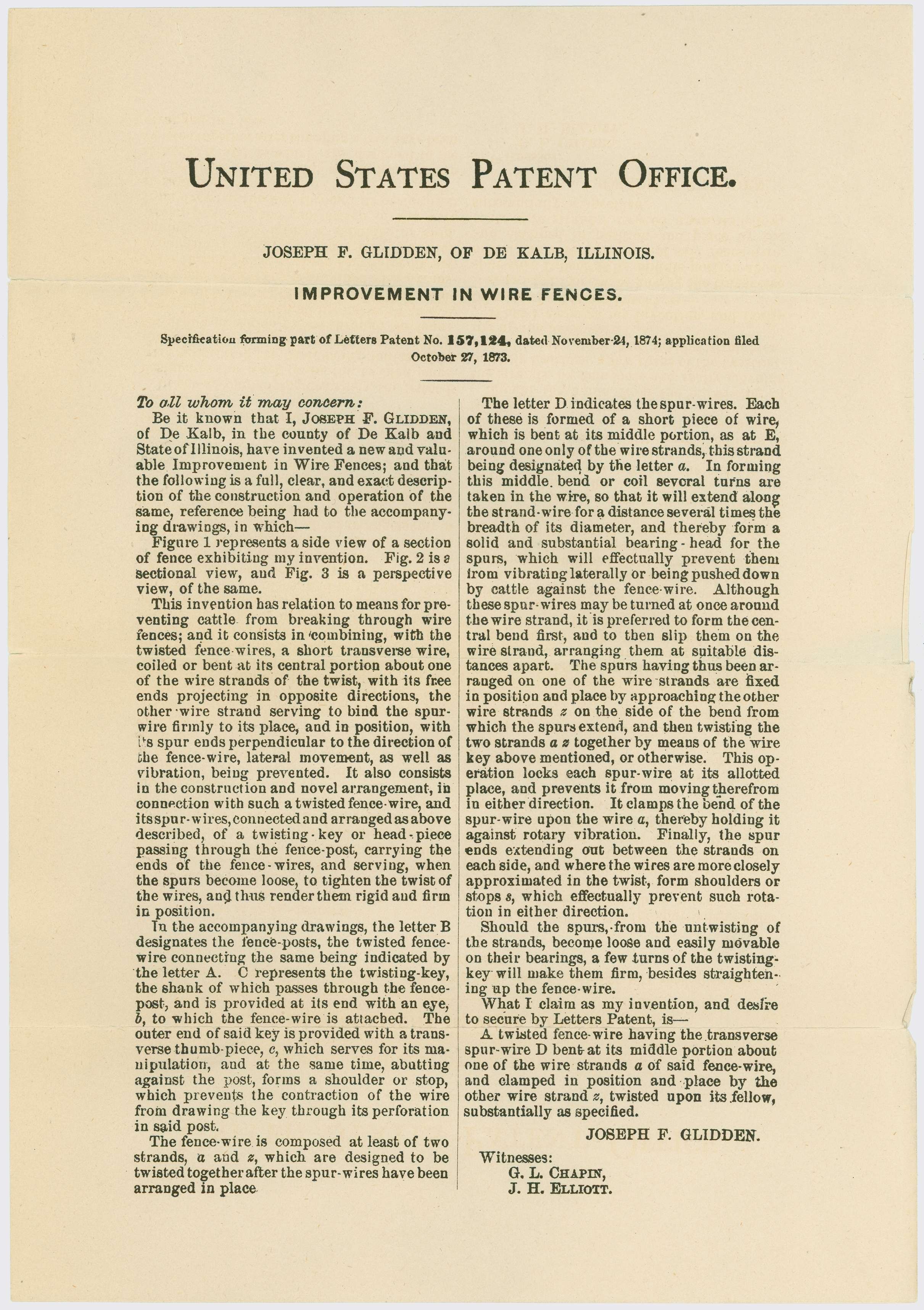What is Patent Number 157,124?
Focusing on Details: White Out/Black Out
All documents and text associated with this activity are printed below, followed by a worksheet for student responses.Introduction
You will see a patent drawing for an invention with its name hidden.
Quickly scan this document. What do you notice first?
Name:
Class:
Class:
Worksheet
What is Patent Number 157,124?
Focusing on Details: White Out/Black Out
Examine the documents included in this activity and write your response in the space provided.
- Describe the document and the invention it depicts as if you were explaining it to someone who can’t see it.
- Based on what you can see, what do you think is the purpose of this invention? List evidence from the document to explain your opinion.
After you have made a hypothesis, click "View Entire Document" to reveal the invention.
Your Response
1
Activity Element
Patent Drawing for Joseph F. Glidden`s Improvement to Barbed Wire
Page 1

Conclusion
What is Patent Number 157,124?
Focusing on Details: White Out/Black Out
- How has this invention been used throughout history since the 1870s? How is it used today?
- What positive effects has this invention had?
- What negative effects has this invention had?
Your Response
Document
Patent Drawing for Joseph F. Glidden's Improvement to Barbed Wire
11/24/1874
Life in the American West was reshaped by a series of patents for a simple tool that helped ranchers tame the land: barbed wire. Michael Kelly made a significant improvement to wire fencing with an invention that "twisted two wires together to form a cable for barbs-the first of its kind." Joseph F. Glidden, an Illinois farmer, submitted this patent for improvement to barbed wire. He was recognized as the winner in the series of improvements to Kelly's invention. Gilden's invention made barbed wire more effective not only because he described a method for locking the barbs in place, but also because he developed the machinery to mass-produce the wire. Today, it remains the most familiar style of barbed wire.
Text adapted from “Glidden's Patent Application for Barbed Wire” in the January 1997 National Council for the Social Studies (NCSS) publication Social Education.
Text adapted from “Glidden's Patent Application for Barbed Wire” in the January 1997 National Council for the Social Studies (NCSS) publication Social Education.
This primary source comes from the Records of the Patent and Trademark Office.
National Archives Identifier: 117891118
Full Citation: Patent Drawing for Joseph F. Glidden's Improvement to Barbed Wire; 11/24/1874; Patent No. 157124; Patent Case Files, 1836 - 1993; Records of the Patent and Trademark Office, ; National Archives at College Park, College Park, MD. [Online Version, https://www.docsteach.org/documents/document/patent-drawing-for-joseph-f-gliddens-improvement-to-barbed-wire, April 24, 2024]Patent Drawing for Joseph F. Glidden's Improvement to Barbed Wire
Page 1

Patent Drawing for Joseph F. Glidden's Improvement to Barbed Wire
Page 2

